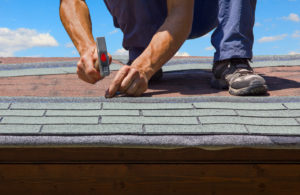 When it’s time to maintain, repair or replace the roof on your home, it’s a good idea to get to know the wide variety of roofing materials that are available and what each has to offer.
When it’s time to maintain, repair or replace the roof on your home, it’s a good idea to get to know the wide variety of roofing materials that are available and what each has to offer.
Asphalt shingles, wood shakes, clay and concrete tile, metal and slate are roofing materials that are best suited for sloped or pitched roofs. Each has a distinctive appearance and come in a variety of colors. Because of its added weight, tile and slate may require you to strengthen the frame of your home to support the roof. Metal roofs can be noisy and also absorb heat, which means you may need to add extra insulation beneath them. Rubber sheeting (ethylene propylene diene monomer, or EPDM), tar, PVC membrane and built-up roofs—including tar, bitumen and rolled materials—are most appropriate for flat roofs.
Green roofs, which are made from a layer of vegetation over a water-proof membrane, are also best suited for flat roofs. They provide insulation, contribute to lower air temperatures and counteract the heat island effect (or the ambient temperature, depending on where you live). The eco-friendly benefits of green roofs are particularly noticeable in urban areas.
Foam roofs are light weight, cost effective and adaptable to all kinds of roofing shapes. They can last up to 50 years when properly maintained.
When selecting a roofing material, consider the pitch or slope of the roof, the strength of your home’s frame, typical weather conditions and the budget in addition to appearance. The durability and life span of a roof can also depend on the quality or grade of the material used, as well as the workmanship of the installation and regular maintenance.




